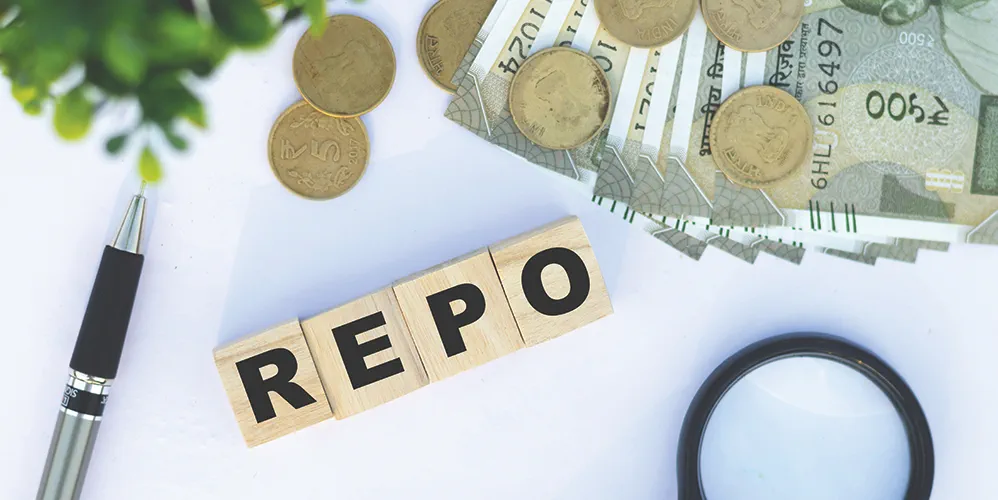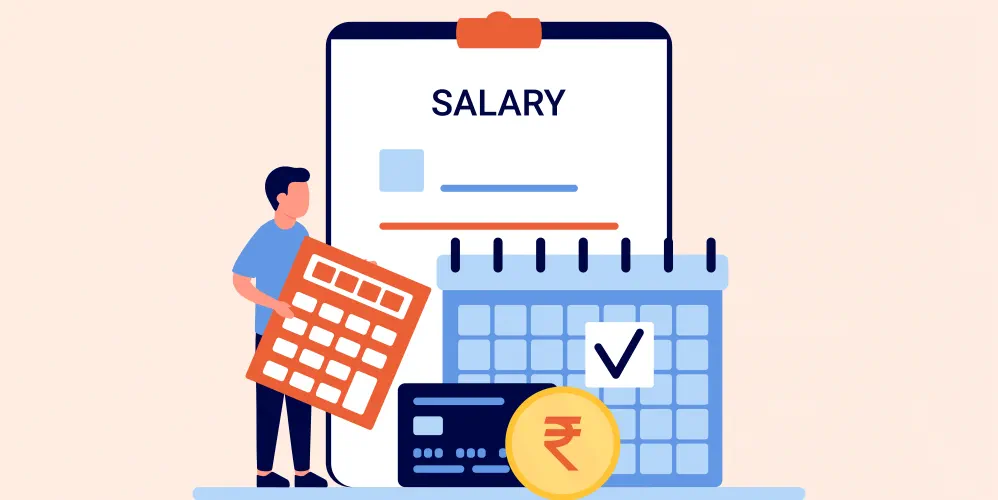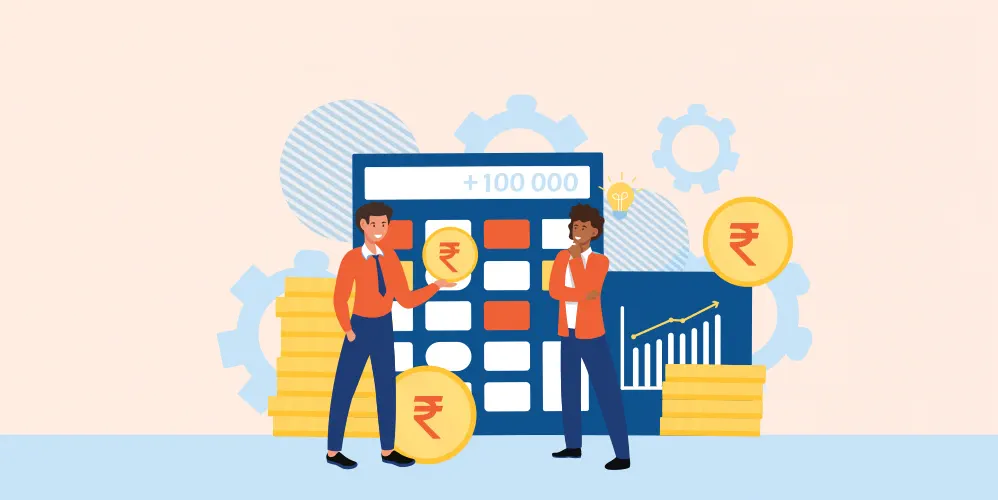
Understanding Repo Rate: Definition, Importance, Current Rates & Impact On Home Loans
15 Jan 2024

Table of Content
In the complex world of finance, the repo rate, short for repurchase rate, emerges as a pivotal player in maintaining economic stability. This powerful tool resides within the arsenal of central banks, allowing them to regulate the financial system's liquidity and influence the broader economic landscape. With the help of this blog, let's embark on a journey to understand the intricacies of the repo rate, delving into its definition, functioning, and its profound impact on various stakeholders.
What is Repo Rate?
Repo rate, also known as repurchase agreement or repurchasing option, refers to the interest rate at which commercial banks borrow money from the central bank, pledging government securities as collateral. The term "repo" is derived from "repurchase agreement," reflecting the contractual nature of the transaction. The process involves a short-term loan where the borrower (usually a commercial bank) sells securities to the lender (the central bank) with an agreement to repurchase them at a specified future date, often the next day, at a slightly higher price. In this case, “repo rate” is the interest rate at which the Reserve Bank of India loans money to the commercial banks in India.
How does Repo Rate work?
Just like you pay interest when you borrow money from a bank, banks themselves also incur interest charges when they borrow funds from the central bank, like the Reserve Bank of India (RBI). This interest rate levied by the central bank on loans to commercial banks is known as the repo rate. This helps restrict the flow of money in the market. When the market is hit with inflation, the repo rate is increased by the Reserve Bank of India (RBI).
Also Read: What is Intraday Trading? A Beginner's Guide to Day Trading Stocks
Why is Repo Rate important?
The repo rate is a critical tool used by central banks to manage the economy and maintain financial stability. It's the interest rate at which banks borrow funds from the central bank, acting as a benchmark for other interest rates throughout the economy. Now that we have understood the meaning of repo rate and how it works, let us take a look at its importance:
Controlling Inflation :
By adjusting the repo rate, central banks can influence the cost of credit and aggregate demand. Higher repo rates discourage borrowing and spending, which helps to control inflation. Conversely, lower repo rates stimulate borrowing and spending, potentially leading to higher inflation.
Promoting Economic Growth :
When the economy slows down, central banks can lower the repo rate to make borrowing cheaper and encourage investment and spending. This can help to stimulate economic growth.
Maintaining Financial Stability :
A high repo rate can discourage excessive risk-taking by banks and other financial institutions, contributing to financial stability.
What is the Current Repo Rate?
In a significant move, the Monetary Policy Committee (MPC) announced a 0.25% increase in the repo rate on February 8, 2023. This brings the new repo rate to 6.50%. This decision was made in light of the prevailing economic conditions, with a focus on managing inflation and ensuring financial stability.
The repo rate was previously increased on December 7, 2022, during which it was 6.25%.
The Effect of Repo Rate on Home Loans
Here's how the repo rate directly affects home loans :
Interest Rate :
The repo rate acts as a benchmark for lending rates across the financial system. When the repo rate rises, banks raise their interest rates, including those for home loans. This translates to higher monthly installments (EMIs) for borrowers, making home loans more expensive.
EMI Amount :
As interest rates rise, the EMI amount on your home loan increases. This means you'll need to allocate a larger portion of your income towards repaying your loan, potentially impacting your disposable income.
Loan Eligibility :
A higher repo rate can affect your loan eligibility as banks become more cautious about lending due to increased risk. This may lead to stricter eligibility criteria and lower loan amounts being offered.
Also Read: Home Loan Eligibility - Guide for Beginners
Repo Rate as a monetary tool for RBI
The repo rate is announced by RBI based on the current economic climate, particularly in response to inflation or recession. In simpler terms, the central bank uses the repo rate as a tool to manage the cost of borrowing in the economy, aiming to either curb inflation by raising rates or stimulate growth by lowering them.
What is Reverse Repo Rate?
Reverse repo rate is the rate at which the central bank, the RBI in our case, borrows money from the commercial banks when there is excess liquidity in the market. This aims to absorb the liquidity in the market, which helps restrict the borrowing power of the investors. When faced with high levels of inflation, the RBI increases the reverse repo rate, thus encouraging banks to park more funds with the RBI.
In conclusion, the repo rate wields immense power in the hands of central banks. By influencing borrowing costs, liquidity, and economic activity, the repo rate acts as a linchpin in monetary policy. Understanding its nuances becomes crucial for navigating the ever-evolving global financial landscape.
Popular Articles
Related Articles







The Ultimate Guide to Vehicle Insurance: Types, Benefits, and How Does It Work



-
Disclaimer
The contents of this article/infographic/picture/video are meant solely for information purposes and do not necessarily reflect the views of Bank of Baroda. The contents are generic in nature and for informational purposes only. It is not a substitute for specific advice in your own circumstances. Bank of Baroda and/ or its Affiliates and its subsidiaries make no representation as to the accuracy; completeness or reliability of any information contained herein or otherwise provided and hereby disclaim any liability with regard to the same. The information is subject to updation, completion, revision, verification and amendment and the same may change materially. The information is not intended for distribution or use by any person in any jurisdiction where such distribution or use would be contrary to law or regulation or would subject Bank of Baroda or its affiliates to any licensing or registration requirements. Bank of Baroda shall not be responsible for any direct/indirect loss or liability incurred by the reader for taking any financial decisions based on the contents and information mentioned. Please consult your financial advisor before making any financial decision.
What is Intraday Trading? A Beginner's Guide to Day Trading Stocks
The term Intraday means “within the day”. As the name itself suggests, Intraday Trading refers to the purchasing and selling of stocks within the same day. Also known as day trading, intraday trading aims to capitalize on short-term price movements, leveraging market volatility to generate profits. Intraday trading revolves around the swift execution of trades with the objective of profiting from small price fluctuations. Traders participating in intraday activities typically do not hold positions overnight, minimizing exposure to overnight market risks. Instead, they rely on technical analysis, charts, and real-time market data to make informed decisions throughout the trading day. Intraday traders will look to settle all their positions when the market closes.
Understanding Trading Accounts: Types, Features, and Benefits
Looking to delve into the world of investments? In the dynamic world of finance, investing in the stock market or other financial instruments is a popular means of building wealth. This is where opening a trading account is of help. To partake in these markets, individuals typically utilize a trading account. A trading account serves as the gateway to the realm of buying and selling securities, offering a platform for investors to participate in the financial markets. Now, let us understand in detail what a trading account is, including its features, types, and benefits.


Leave a Comment
Thanks for submitting your details.